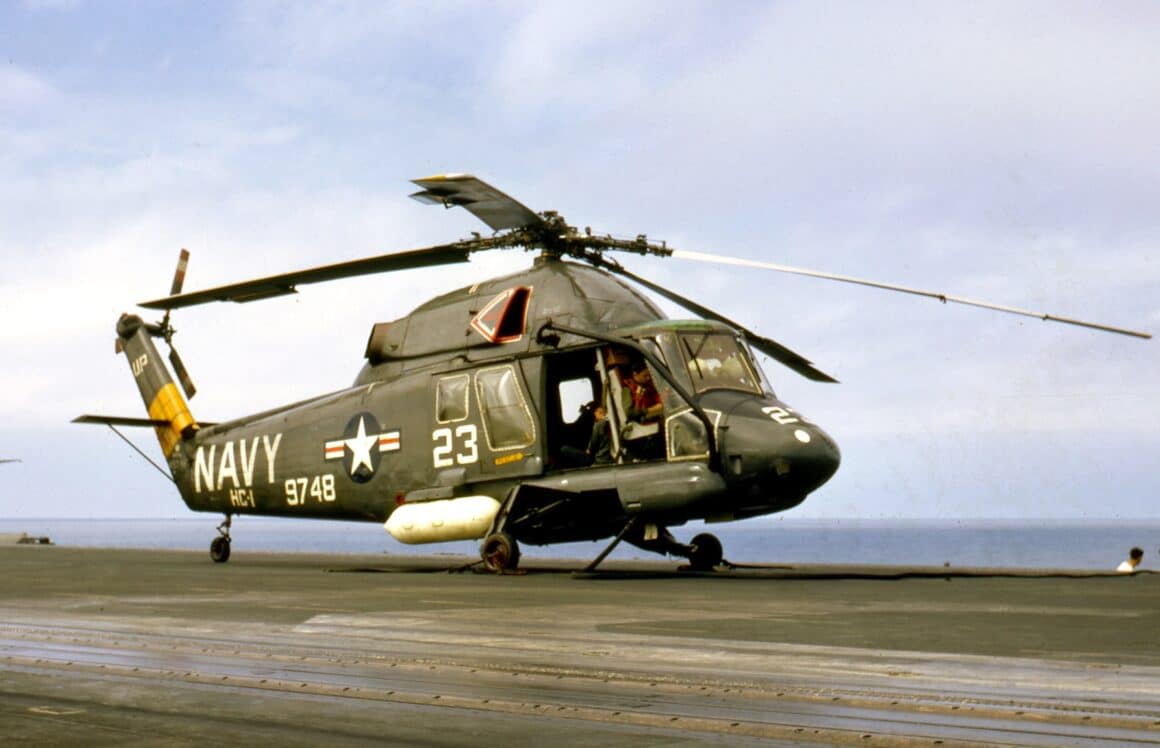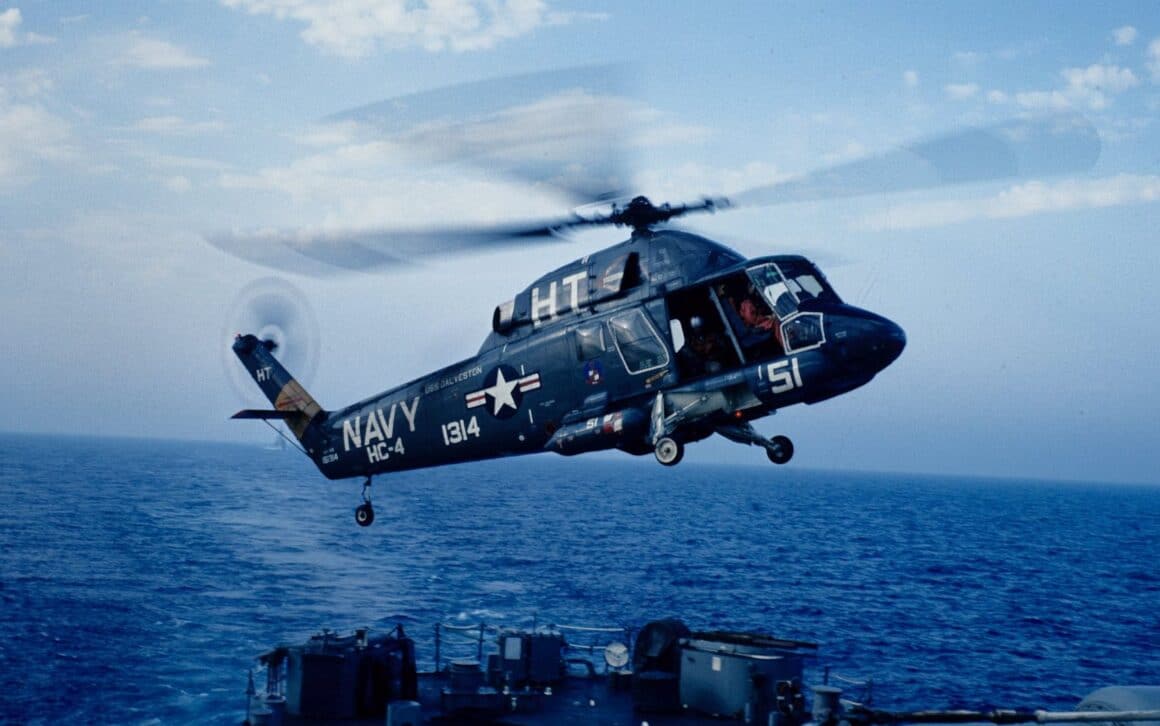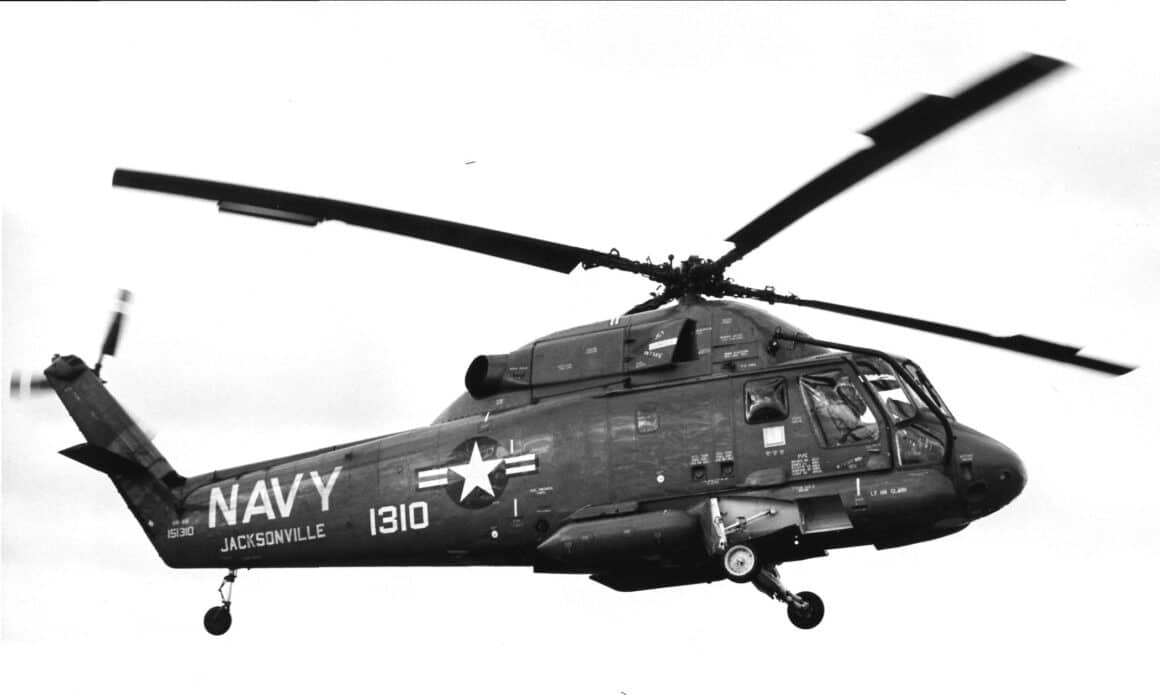The SH-2 Seasprite Served In Peace and War with Distinction for Nearly 40 Years
The Kaman SH-2 Seasprite was designed in response to a 1956 US Navy requirement for a compact, all-weather flight capable, multipurpose naval helicopter. Kaman’s proposal, internally designated K-20, was a largely conventional helicopter design powered by a single General Electric T58-GE-8F turboshaft engine turning a 44-foot four-bladed main rotor and a three-bladed anti-torque tail rotor.
The Navy awarded a contract to Kaman for four prototypes designated YHU2K-1 and an initial batch of 12 production rotorcraft designated HU2K-1 in late 1957.

Working Out the Bugs
Although the first prototype took to the skies on 2 July 1959, it took several years for Kaman and the Navy to work the kinks out of the prototypes and the initial production machines. In fact, over the course of their lifetimes nearly every Seasprite was remanufactured at least once.
When in September of 1962 the Navy adopted the Tri-Service Aircraft Designation system the HU2K-1 became the UH-2A and the HU2K-1U became the UH-2B. But the nickname “Hooky Took” stuck with the Seasprite.

Small But Quite Capable
Diminutive in size compared to many of its contemporaries, the Seasprite was a shade over 38 feet long with blades folded. Its 44-foot main rotor diameter and 52 foot overall length allowed it to operate from even the smallest of helicopter flight decks aboard escort ships. Maximum takeoff weight was 12,500 pounds and range was 422 miles with maximum fuel load.
Movable flaps on the trailing edges of the main rotor blades were controlled by the pilot, which reduced the amount of hydraulic power required to control the blades. UH-2s were equipped with sliding doors on both sides of the fuselage and the ability to carry auxiliary fuel tanks. But that single turboshaft engine eventually became a liability.

More Power for the Hooky Took
Single-engine UH-2A Seasprites entered US Navy service with HU-2 Fleet Angels in December of 1962 and the type first went to sea aboard the aircraft carrier USS Independence (CV-62) in June 1963. The UH‑2B went to sea aboard the guided missile cruiser USS Albany (CG-10) in August of 1963.
But the Navy quickly determined that the helo would be a far more capable machine if it were powered by a pair of engines. Kaman remanufactured 40 single-engine UH-2As and UH-2Bs to the UH-2C specification beginning in August of 1967. The Charlies were powered by two T58-GE-8B turboshaft engines turning the same main and tail rotor system. HH-2Cs, HH-2Ds, and all subsequent Seasprites were equipped with a four-bladed anti-torque tail rotor.

Utility Infielder
The Seasprites largely replaced earlier generations of piston engined rotorcraft and were utilized for a variety of missions, including supply, communications, ship-to-shore and ship-to-ship transport, reconnaissance, supply, casualty evacuation, and plane guard duties, but the early Seasprites became perhaps best known for search and rescue (SAR) work.
Initially crewed by two, the UH-2s could stuff up to 11 passengers or four stretcher cases inside the cabin. The fuselage was watertight to facilitate landings in calm water and equipped with retractable main landing gear.

